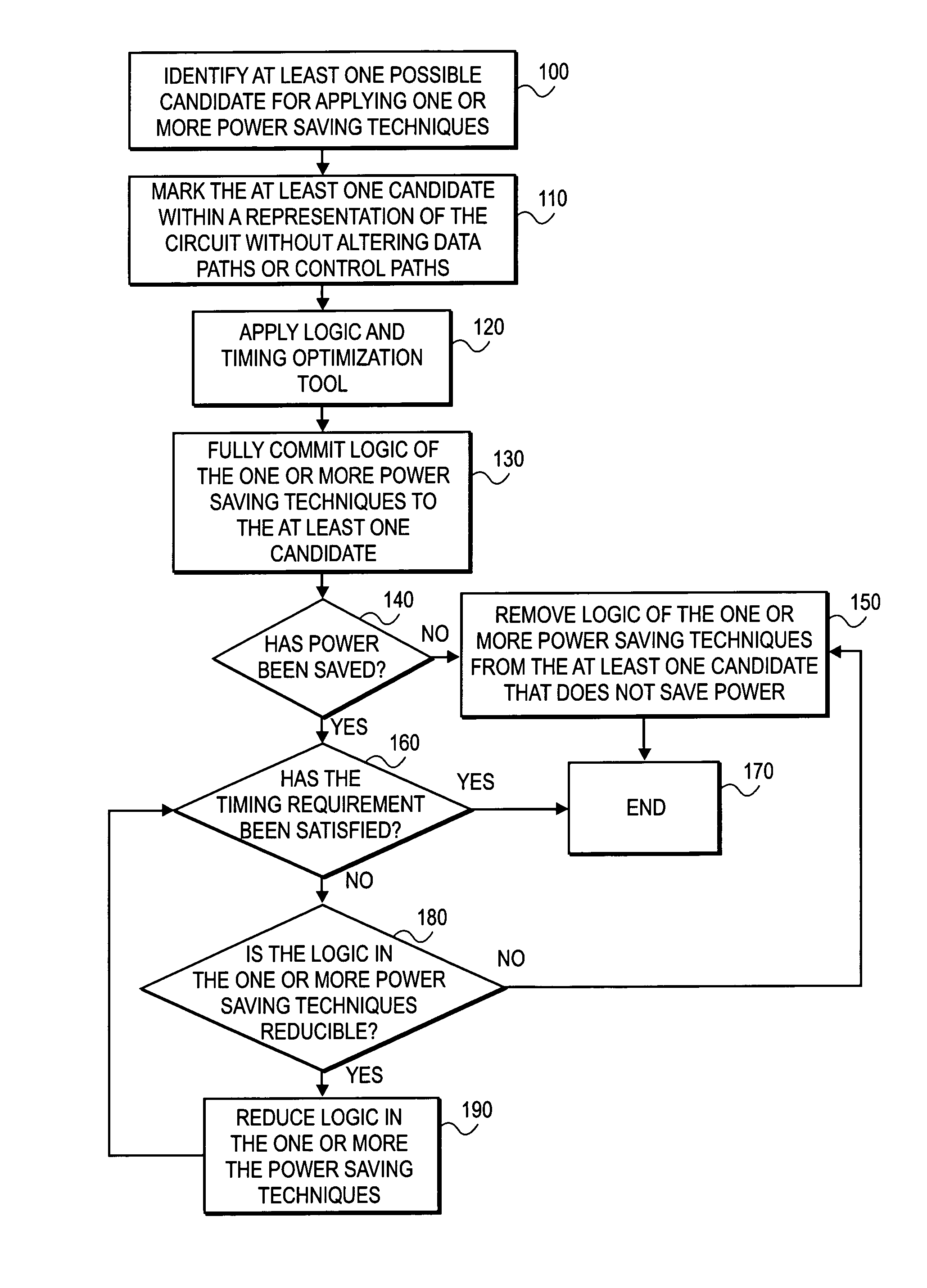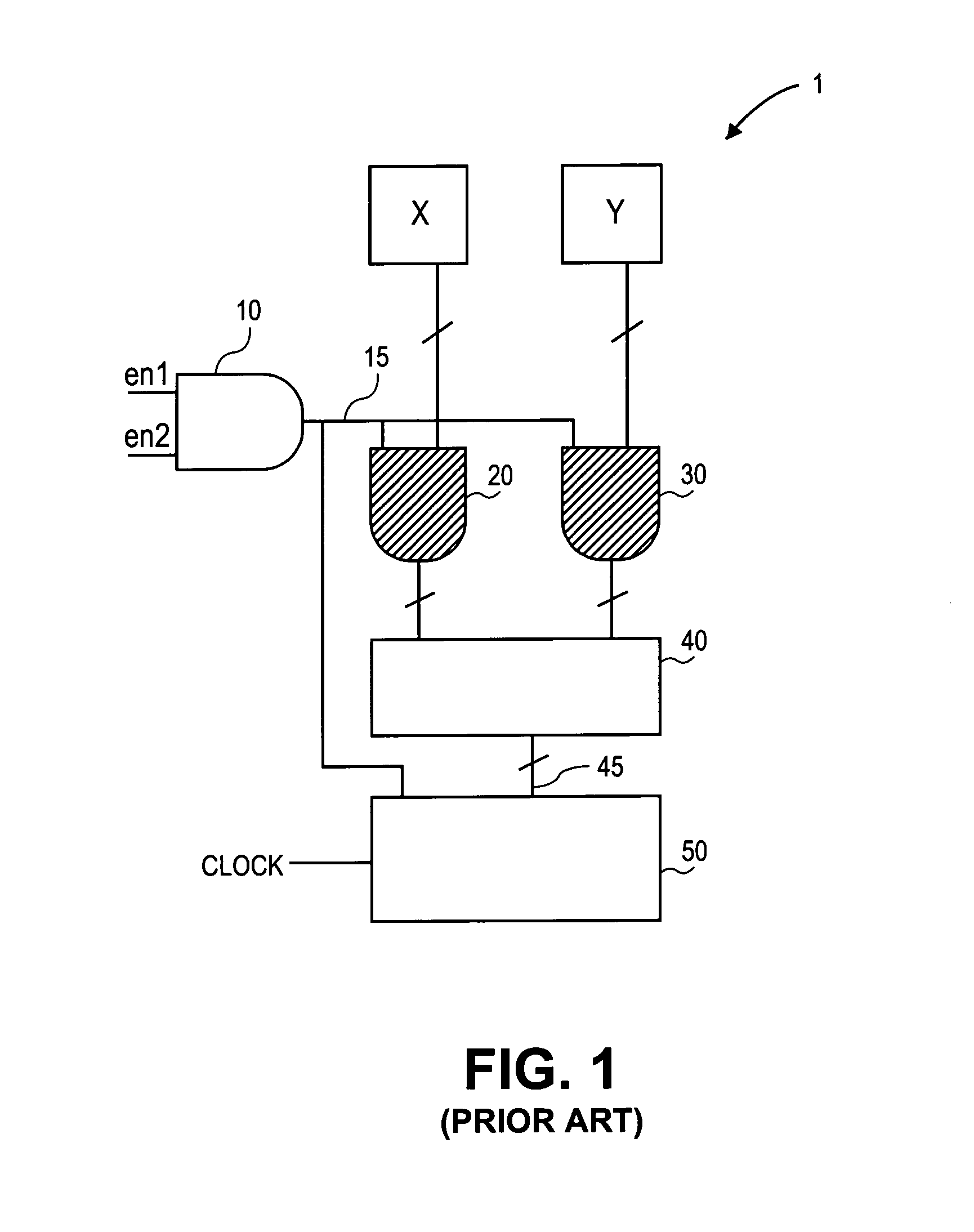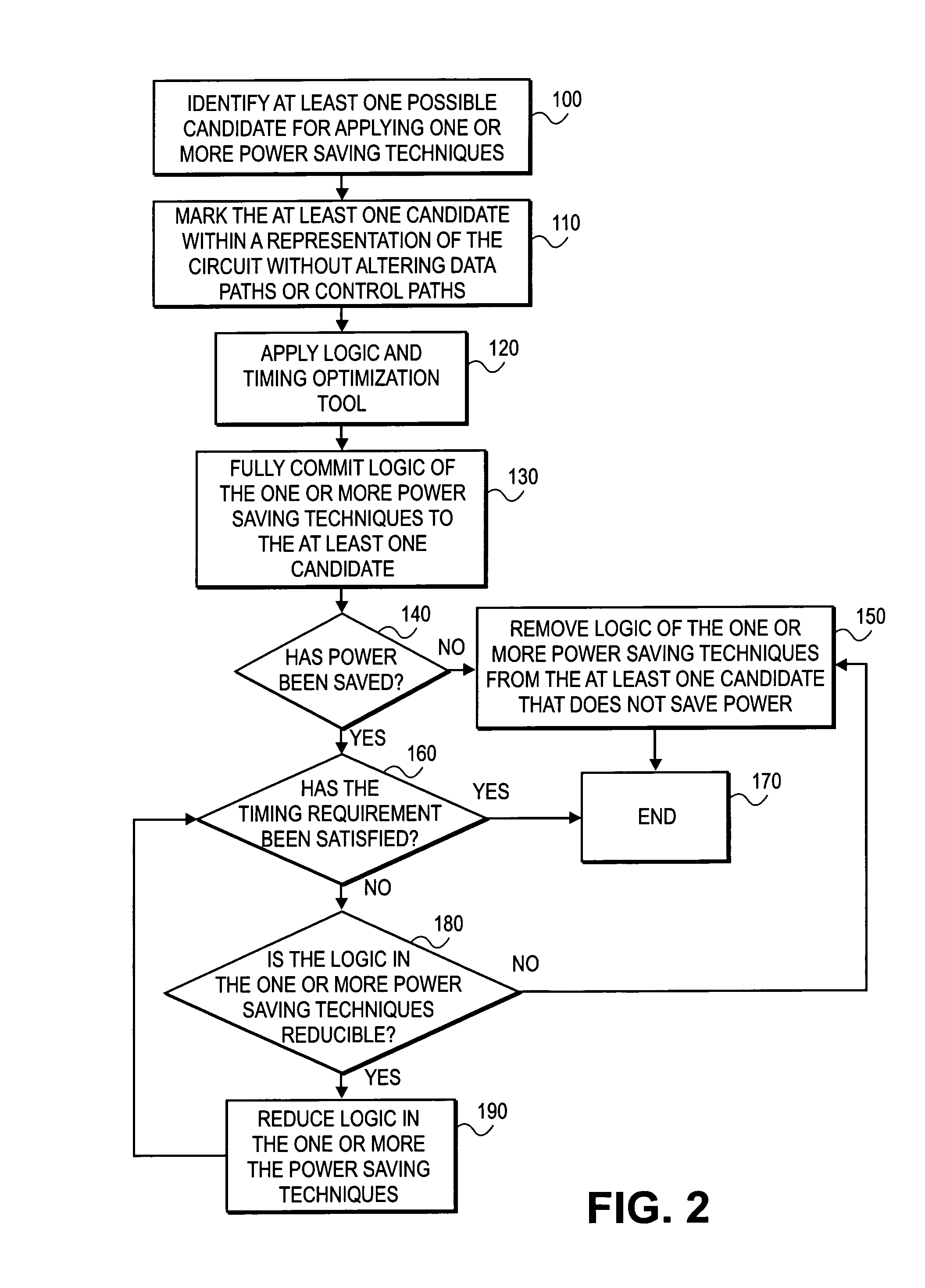Method and mechanism for RTL power optimization
a technology of power optimization and power optimization, applied in the direction of cad circuit design, program control, instruments, etc., can solve the problems of significant waste, substantial amount of power, and difficulty in the design process, and achieve the effect of saving a substantial amount of power and high potential for saving power
- Summary
- Abstract
- Description
- Claims
- Application Information
AI Technical Summary
Benefits of technology
Problems solved by technology
Method used
Image
Examples
Embodiment Construction
[0018]The present invention is disclosed in a number of embodiments as methods and mechanisms for optimizing the power consumption of a micro-electronic circuit. Some of the embodiments described use sleep-mode transformation as the power saving technique and / or modification. However, the principles presented here are applicable to any power saving technique and / or modification using any circuit design program, and thus the scope of the invention is not to be limited to the exact embodiments shown herein.
[0019]One approach to effectively apply power saving techniques and / or modifications to a micro-electronic circuit is illustrated in FIG. 2 as a method in accordance with an embodiment of the present invention. At the first step, one or more candidates are identified within the circuit to apply one or more power saving techniques and / or modifications (action block 100). This is preferably achieved during circuit synthesis at the RTL, which may be referred to as the RTL exploration p...
PUM
 Login to View More
Login to View More Abstract
Description
Claims
Application Information
 Login to View More
Login to View More - R&D
- Intellectual Property
- Life Sciences
- Materials
- Tech Scout
- Unparalleled Data Quality
- Higher Quality Content
- 60% Fewer Hallucinations
Browse by: Latest US Patents, China's latest patents, Technical Efficacy Thesaurus, Application Domain, Technology Topic, Popular Technical Reports.
© 2025 PatSnap. All rights reserved.Legal|Privacy policy|Modern Slavery Act Transparency Statement|Sitemap|About US| Contact US: help@patsnap.com



